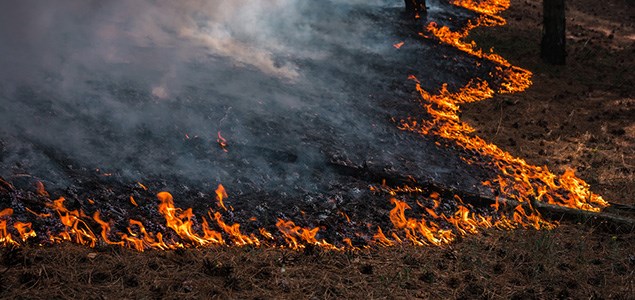While it's still early in the wildfire season, Ontario is tracking higher than the decade average for the number of forest fires.
The Ministry of Natural Resources and Forestry has recorded 187 fires across the province, which exceeds the 10-year average of 169 fires.
Currently, the northwest region has a total of seven fires under control, five fires are not under control, five fires are being held and seven fires are being observed.
The most concerning in the northwest is the active fire north of Cat Lake First Nation, at nearly 9,300 hectares. Eight fire crews and three helicopters have been assigned to this fire. Crews have consolidated hose lines along the southern portion of the fire to keep the fire from spreading in the community.
In the northeast region, there are 34 active fires, with 22 not under control, nine fires are being held, one fire is under observation, and four fires are under control.
The Wawa 03 fire, located about nine kilometres southeast of White River, has slightly decreased and is nearly 6,700 hectares. The ministry has four helicopters, one wildland fire engine, and 18 fire crews committed to fire suppression.
The ministry has had restricted fire zones in effect since June 1 to mitigate human-related incidents.
Ministry fire information officer Alison Bezubiak said dry weather conditions are a playing a considerable factor.
Trudy Kidd, a warning preparedness meteorologist for Environment Canada, is predicting that June will see above-normal dry weather conditions throughout the month with very little rain.
Kidd said there is 40 per cent of showers forecasted for the region on Friday, but she isn’t optimistic.
“Often drought begets drought and the dryer your conditions are, I think a lot of people have noticed, the hard it is to get that nice soaking rain that we need,” said Kidd to Newswatch.
"This is such an active start to the forest fire season, I think people really have to stay on top of their weather forecasts, their air quality health index forecasts, and monitor what is going on at the moment.”
Kidd said the air quality health index for northwestern Ontario has been low, with most of the wind blowing south. That will change heading into the weekend, she said.
“Once we get a wind shift from the south where it is now to the north then there is a potential for the smoke from those forest fires to get to where people are in northwestern Ontario,” said Kidd.
By Saturday, a low-pressure system will pass through Hudson Bay and the northern winds will disperse the smoke blanketing the north, Kidd said. Environment Canada models are showing that it will stay aloft and sit at a lower air quality health index.
From the files of Sheri Leviski-Kotyk, CKPR Radio
